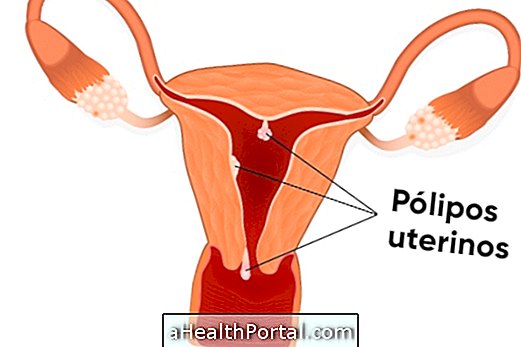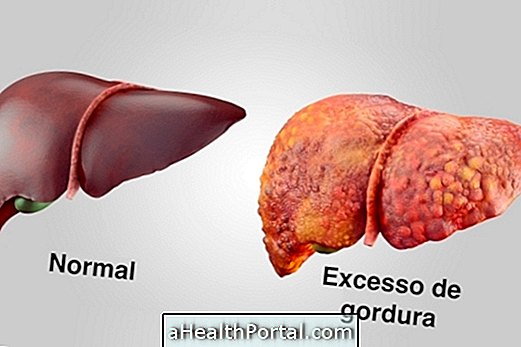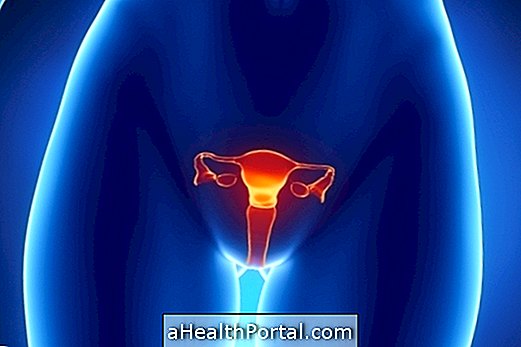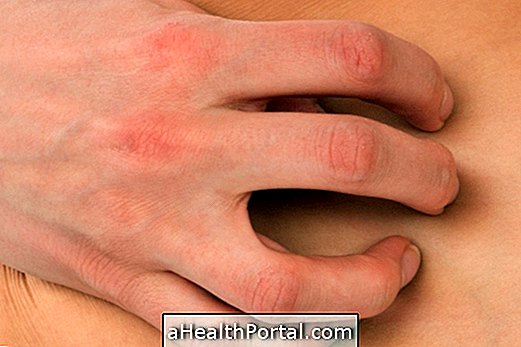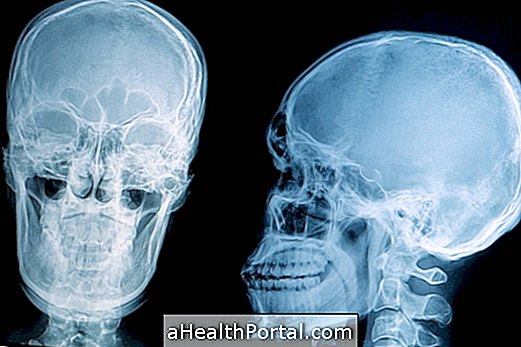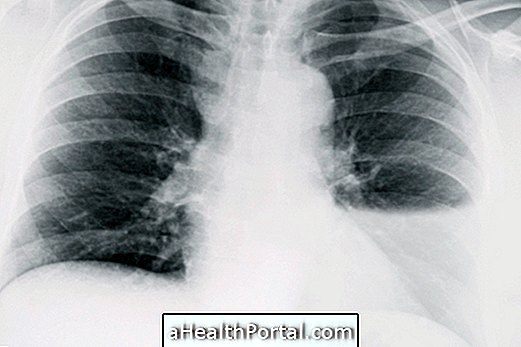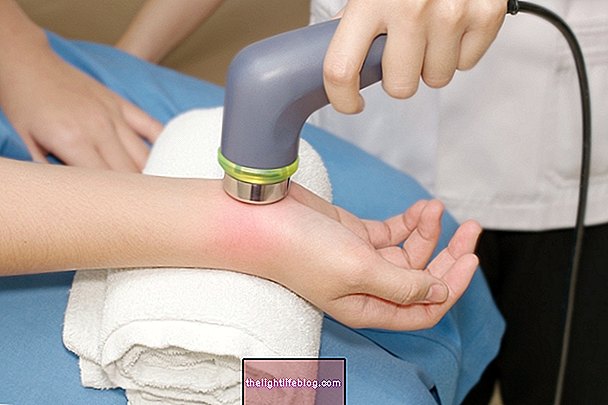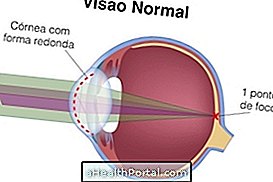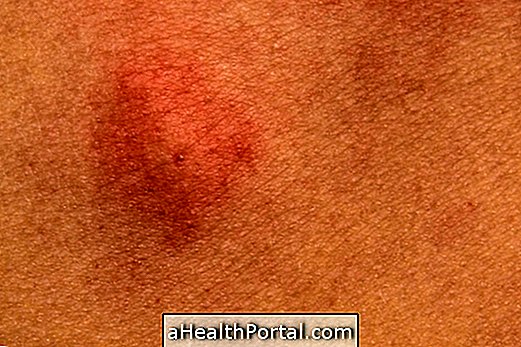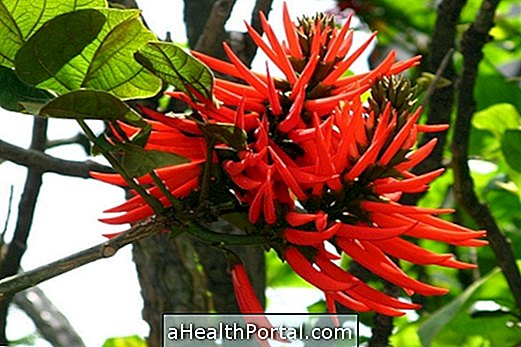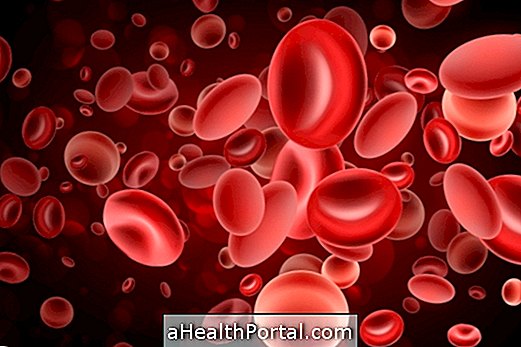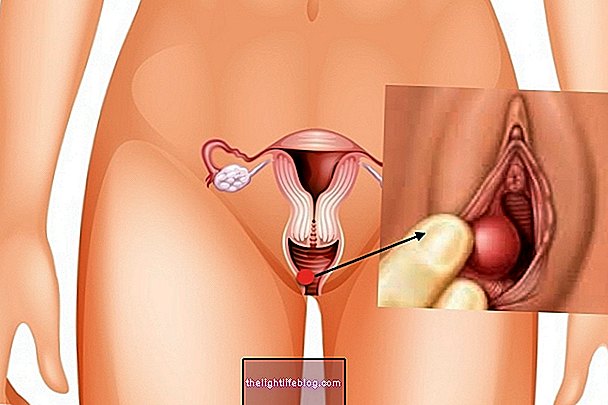Throat blisters can be caused by a variety of factors, including infections, some treatments, or some diseases, and can spread to the tongue and esophagus and become red and swollen, making swallowing and speech difficult.
Treatment depends on the cause of the problem and usually consists of taking analgesics, anti-inflammatories, use of elixirs or use of antibiotics in the case of an infection.

Main causes
1. Treatments for cancer
Both radiotherapy and chemotherapy are treatments that lead to a decrease in the immune system and thus cause several side effects, one of which may be the formation of blisters in the throat, for example.
What to do: To relieve cancer-related side effects, it is important to keep the mouth and throat well hydrated and eat soft foods such as watermelon, bananas, and legumes.
2. Infections
The proliferation of microorganisms in the mouth can lead to bubbles in the throat. The mouth is naturally constituted by microorganisms, however due to situations that may alter the immune system or expose the mouth too much, there may be uncontrolled growth of microorganisms.
What to do: In this case, it is best to seek medical advice so that the type of microorganism that causes the onset of blisters in the throat can be identified and thus the treatment can be started, which can be done with antifungal, antiviral or antibiotics. In addition, proper hygiene of the mouth is important. Learn how to properly brush your teeth.
3. Cancer in the oropharynx
One of the symptoms of oropharyngeal cancer is the presence of blisters or sore throats that do not heal in 15 days. In addition, it is indicative of oropharyngeal cancer throat pain, irritation and the presence of red or white patches on the gums, tongue, lips or throat.
What to do: It is important to see a doctor as soon as the first symptoms of oropharyngeal cancer appear so that treatment can be started as soon as possible. Usually the treatment is done from removal of the tumor, followed by chemo and radiotherapy sessions. Here are the treatment options for mouth cancer.

4. Foot-and-mouth disease
The aphthous stomatitis, popularly known as the cold sore, corresponds to a rounded and whitish wound that can arise in the throat and cause discomfort to swallow or speak, for example. Learn about the possible causes of sore throat.
What to do: The treatment for sore throat is done according to the doctor's advice, and is usually done with the use of ointments and suspension of consumption of acidic foods, as they may increase the discomfort. See the best remedies for thrush.
5. Herpangina
Herpangina is a viral disease that occurs most often in infants and children aged 3 to 10 years characterized by fever, sore throat and the presence of canker sores in the mouth. Here's how to identify herpangina.
What to do: The treatment for herpangina is done with the advice of the pediatrician and it is recommended to use medication to relieve symptoms, such as Paracetamol or topical Lidocaine, which should be passed in the mouth to reduce the discomfort caused by the wounds.
6. Behçet's disease
Behçet's disease is a rare disease that occurs most often in people between 20 and 30 years old, characterized by inflammation of different blood vessels, leading to frequent diarrhea, bloody stools and wounds in the genital area and mouth. Learn more about Behçet's disease.
What to do: Behçet's disease has no cure, and the use of medicines to relieve symptoms, such as corticosteroids or anti-inflammatories, for example, should be used according to medical advice. Learn how to relieve the symptoms of Behçet's disease.
Other causes
In addition to these causes, there are others that can cause blisters to appear in the esophagus and vocal cords, and can sometimes spread to the throat, such as gastroesophageal reflux, Herpes simplex virus infection, HIV, HPV, some medicines, excessive vomiting or alcohol abuse, for example.

Possible symptoms
When blisters appear in the throat, there may be no further symptoms, however, in some cases the sores may also appear in the mouth and difficulty swallowing, white spots on the throat, fever, mouth and throat pain, appearance of nodules in the neck, bad breath, difficulty moving the jaw, chest pain and heartburn.
How is the treatment done?
The treatment of the blisters in the throat depends on its cause, being very important to go to the doctor so that the correct diagnosis can be made. Thus, if it is an infection, the treatment consists of the administration of antibiotics or antifungals, which must be prescribed by the doctor.
To relieve pain and discomfort, analgesics such as paracetamol, for example, or anti-inflammatories such as ibuprofen or aspirin can be taken. In addition, an antiseptic, healing and analgesic elixir may be used to gargle about 3 times a day to relieve discomfort.
It is also important to avoid spicy, hot or acidic foods because they can irritate the blisters even more, and you should also drink plenty of water, preferably cold, and eat frozen foods that help relieve pain and inflammation.
If the blisters are caused by gastric reflux, the doctor may prescribe antacids or inhibitors of acid production to prevent the burning of the throat. See the remedies used to treat gastroesophageal reflux.
